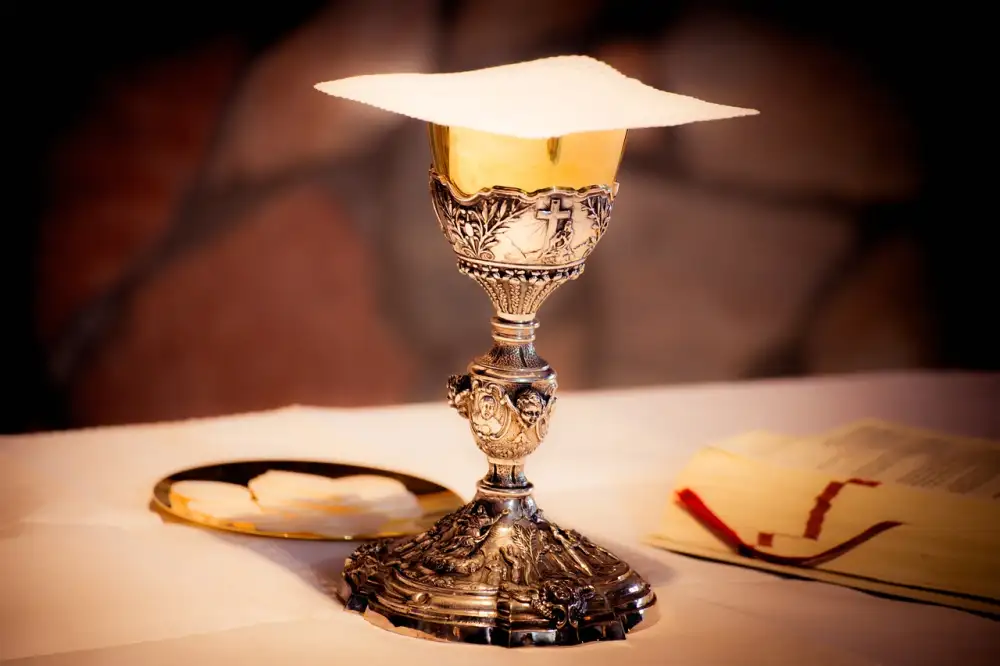Deliciously Divine: Unleash the Magic of Easter Bread with this Traditional Recipe

Easter is a time of joy and celebration, and what better way to mark this special occasion than with a deliciously divine Easter bread? This traditional treat has been enjoyed for centuries, bringing families together to share in the warmth and sweetness of the season. With its soft, pillowy texture and delightful flavors, Easter bread is a true delight for the senses. So let's dive into the world of Easter bread and uncover the magic that awaits us in every bite. Get ready to embark on a culinary adventure that will surely leave you craving more!
History and Significance of Easter Bread
Easter bread, also known as Pascha or Kulich, has a rich history and holds great significance in many cultures. It is a traditional bread baked during the Easter season to celebrate the resurrection of Jesus Christ. The origins of Easter bread can be traced back to ancient times when it was made as an offering to pagan gods. Over time, it became associated with Christian traditions and symbolized new life and rebirth. Today, Easter bread continues to be a beloved treat enjoyed by families around the world as they gather to commemorate this joyous occasion.
Ingredients Required for Easter Bread
To make this deliciously divine Easter bread, you will need the following ingredients:
1. All-purpose flour: 4 cups
2. Active dry yeast: 2 teaspoons
3. Warm milk: 1 cup
4. Granulated sugar: ½ cup
5. Unsalted butter (softened): ½ cup
6. Eggs: 4 (at room temperature)
7. Lemon zest: 1 tablespoon
8. Vanilla extract: 1 teaspoon
9. Salt: ½ teaspoon
10. Raisins or currants: ½ cup
These simple yet essential ingredients are the foundation of a perfect Easter bread that will fill your home with an irresistible aroma and bring joy to your loved ones during this festive season.
Step-by-Step Instructions to Make Easter Bread
Step 4: Step-by-Step Instructions to Make Easter Bread
1. In a large mixing bowl, combine 2 cups of warm milk, ½ cup of sugar, and 2 packets of active dry yeast. Let it sit for about 5 minutes until the yeast is activated and foamy.
2. Add ½ cup of melted butter, 4 beaten eggs, and 1 teaspoon of vanilla extract to the yeast mixture. Mix well.
3. Gradually add in 6 cups of all-purpose flour, one cup at a time, stirring with a wooden spoon until a sticky dough forms.
4. Turn the dough out onto a floured surface and knead for about 8-10 minutes until it becomes smooth and elastic.
5. Place the dough in a greased bowl, cover it with a clean kitchen towel, and let it rise in a warm place for about 1-2 hours or until it doubles in size.
6. Punch down the risen dough and divide it into three equal portions. Roll each portion into a long rope and braid them together tightly.
7. Transfer the braided bread onto a greased baking sheet or into a greased loaf pan. Cover it again with the kitchen towel and let it rise for another hour.
8. Preheat your oven to 350°F (175°C). Brush the risen bread with an egg wash made by whisking together one beaten egg with a tablespoon of water.
9. Bake the Easter bread for approximately 30-35 minutes or until golden brown on top and cooked through.
10. Remove from the oven and let it cool on a wire rack before slicing and serving.
Enjoy your homemade Easter bread!
Tips and Variations for Perfect Easter Bread
1. Use high-quality ingredients: To ensure the best taste and texture, use fresh eggs, butter, and flour. Avoid using expired or low-quality ingredients.
2. Let the dough rise properly: Give the dough enough time to rise before shaping it into a loaf. This will result in a lighter and fluffier bread.
3. Add flavors: Enhance the flavor of your Easter bread by adding spices like cinnamon or nutmeg. You can also add raisins, dried fruits, or even chocolate chips for a delightful twist.
4. Experiment with shapes: While the traditional shape of Easter bread is a braided loaf, feel free to get creative! You can shape it into a wreath, nest, or even individual rolls.
5. Glaze it beautifully: Brushing your Easter bread with an egg wash before baking will give it a shiny and golden crust. For extra sweetness, you can drizzle icing or sprinkle powdered sugar on top after baking.
6. Make it gluten-free: If you have dietary restrictions, you can substitute regular flour with gluten-free alternatives like almond flour or rice flour. Adjust the measurements accordingly.
7. Try different fillings: Instead of leaving your Easter bread plain, consider adding a filling such as cream cheese, Nutella, or fruit preserves for an added burst of flavor.
Remember to have fun while making your Easter bread and don't be afraid to experiment with different flavors and shapes. The possibilities are endless!
Serving and Storing Easter Bread
Once your Easter bread is baked to perfection, it's time to serve and enjoy this delightful treat. The aroma of freshly baked bread will fill your kitchen, enticing everyone to gather around the table.
To serve Easter bread, simply slice it into thick or thin slices, depending on your preference. You can serve it as is or lightly toast it for added crispness. Some people like to spread butter or cream cheese on their slices, while others prefer a drizzle of honey or a sprinkle of powdered sugar.
If you have any leftovers (which is rare!), store the Easter bread in an airtight container at room temperature for up to 3 days. It's best enjoyed fresh, but if you want to extend its shelf life, you can also freeze it for up to 3 months. Just make sure to wrap it tightly in plastic wrap and place it in a freezer bag before freezing.
When ready to enjoy again, thaw the frozen Easter bread at room temperature and reheat it in the oven for a few minutes until warm. It will taste just as delicious as the day it was made!
Remember, Easter bread is not only a treat for the taste buds but also a feast for the eyes. So don't forget to present it beautifully on a festive platter or cake stand adorned with colorful decorations that reflect the spirit of Easter.
Whether you're serving Easter bread as part of your holiday brunch or gifting it to loved ones, its homemade freshness and divine flavors will surely be appreciated by all. So go ahead and unleash the magic of this traditional recipe – celebrate Easter with every heavenly bite!
Easter is a time of joy and celebration, and what better way to commemorate this special occasion than by baking your own Easter bread? By using fresh ingredients and following this traditional recipe, you can create a deliciously divine treat that will impress your family and friends.
Homemade Easter bread not only tastes amazing but also allows you to infuse love and care into every bite. The process of making it from scratch provides a sense of satisfaction and accomplishment. Plus, the aroma that fills your kitchen as it bakes is simply heavenly.
So, this Easter, take the opportunity to unleash the magic of Easter bread in your home. Gather your loved ones around the kitchen counter, roll up your sleeves, and embark on a culinary adventure together. Let the joy of creating something special fill your hearts as you knead the dough, shape it into beautiful braids or wreaths, and watch it rise.
Remember to savor each step of the process – from mixing the ingredients to waiting for it to bake golden brown in the oven. And when you finally slice into that warm loaf of homemade Easter bread, be prepared for pure bliss.
Whether enjoyed plain or adorned with colorful sprinkles or icing, this delightful treat is sure to become a cherished tradition in your family. Share it with neighbors and friends as a symbol of unity and new beginnings.
So go ahead, celebrate Easter with homemade freshness. Embrace the tradition, create memories, and indulge in the pleasure of breaking bread together. May this recipe bring joy and happiness into your home during this festive season. Happy Easter!
Published: 10. 12. 2023
Category: Home



